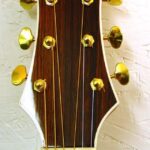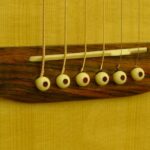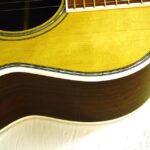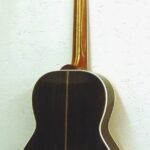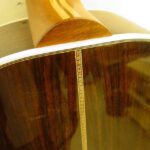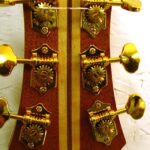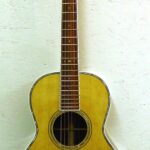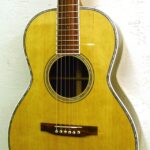This is a very interesting guitar. It is a 13 fret to the body, 21 fret instument. Both of these design decisions place the soundhole and position the bridge more to the center and over the maximum volume area of the body. Gibson did this in the mid-thirties with some Nick Lucas models but quickly moved to a more conventional 12 fret to the body arrangement. Most who love this guitar believe it was for marketing reasons and some of those old 13 fret models are the most prized finger picking guitars in the world. After building one in that configuration, I understand why. The other main change in this instrument was to increase the sound hole dimension to 4 1/8″ and increase the scale length to 25.4″. I believe the larger soundhole greatly increases the bass response without damaging the treble response of the instrument. The longer scale on this small instrument makes the notes just “pop”. At least on this guitar, these modifications make this guitar extremely loud yet articulate and precisely balanced. This particular instrument has a silky, sitka spruce top with an Indian Rosewood body. It’s peghead overlay, fretboard and bridge are all from the same Brazilian Rosewood plank, making all of them match beautifully. The tuners are gold Grover Sta-Tite with an 18:1 ratio. The guitar is trimmed in mother of pearl with black/white/black purfling. It is bound in white plastic. The frets are semi-hemispherical, making the guitar very comfortable to play since there are no fret ends to contend with. The truss rod is adjusted from inside the soundhole. The neck is wider than normal at 1 13/16 at the nut. The string spacing is 2 3/8″ at the bridge making this an ideal fingerpicking instrument.
